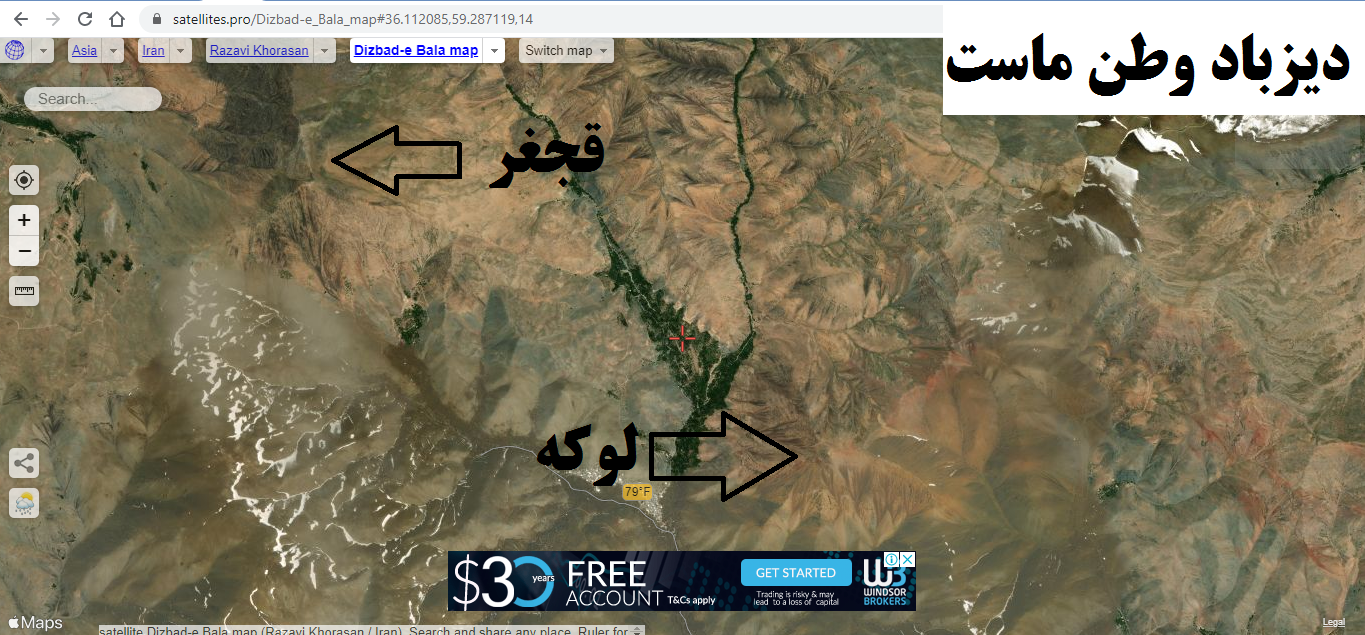
دیزباد وطن ماست
سایت رسمی روستای دیزباد علیا (بالا) از توابع شهرستان نیشابور در استان خراسان رضوی ایران.
دیزباد وطن ماست
سایت رسمی روستای دیزباد علیا (بالا) از توابع شهرستان نیشابور در استان خراسان رضوی ایران.دیزباد بدون اطلاعات در سایت Find Word
«دیزباد وطن ماست»- سایت فایند ورد به نوعی یک دیکشنری است که در مورد هر کلمه اطلاعات مورد نیاز مخاطبان را در اختیار آنها قرار می دهد.
دو واژه دیزباد علیا و دیزباد بالا به زبان انگلیسی در این سایت قرار گرفته است اما هنوز صفحه برای این دو واژه بهینه نشده است.
امیدواریم که علاقه مندان و صاحبنظرات در این صفحات اطلاعات کافی را در باره دیزباد قرار دهند. دیزباد وطن ماست منبعی است که می توانید از آن برای تکمیل داده ها در ویکی ها استفاده کنید.
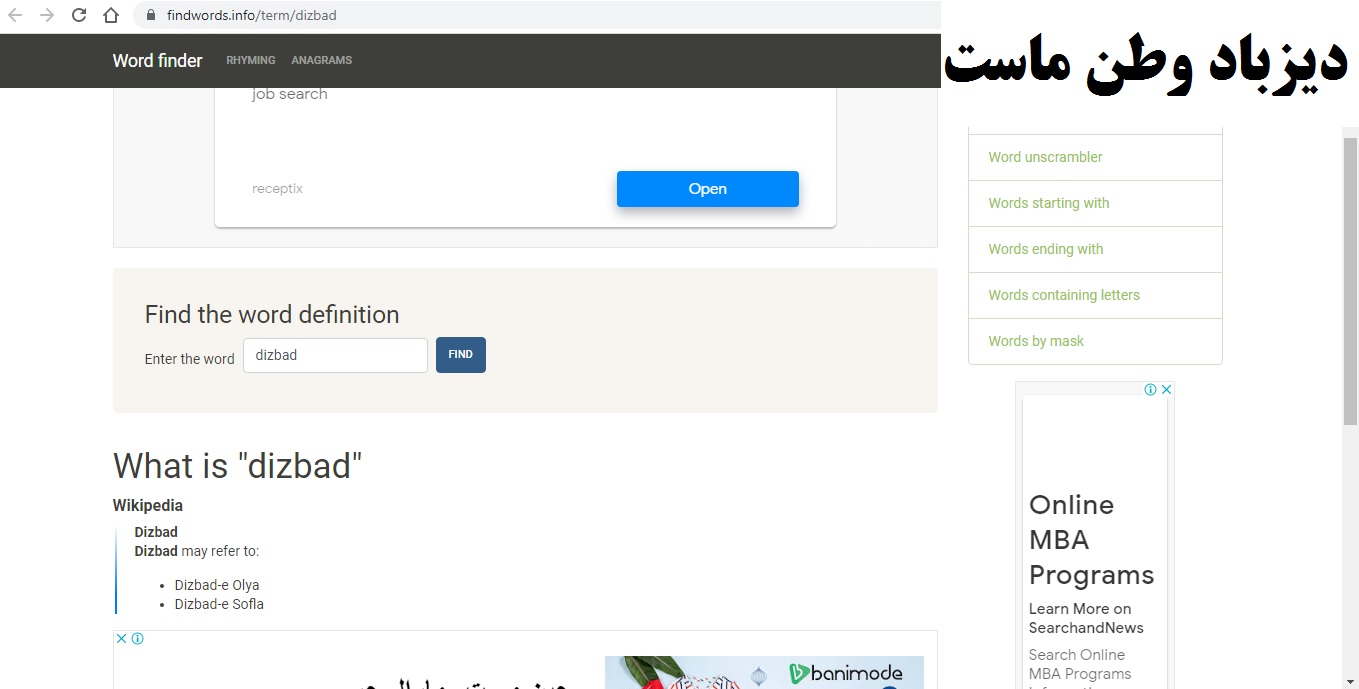
دیزباد در سایت ویکی دیتا
«دیزباد وطن ماست»- سایت ویکی دیتا یکی از سایت های همگانی برای ثبت داده های مهم در مورد موضوعات مختلف است که در صفحه ای به دیزباد پرداخته است.
اگرچه این صفحه هنوز ناقص است و نیازمند نظرات اندیشمندان و متفکران دیزبادی است، اما اطلاعات جزئی در مورد سایر نام های دیزباد و نقشه آن را در خود گنجانده است.
این سایت به زبان انگلیسی است و دیزبادی ها می توانند چنانچه اطلاعاتی در مورد دیزباد به صورت آماری و داده ای دارند در آن قرار دهند.
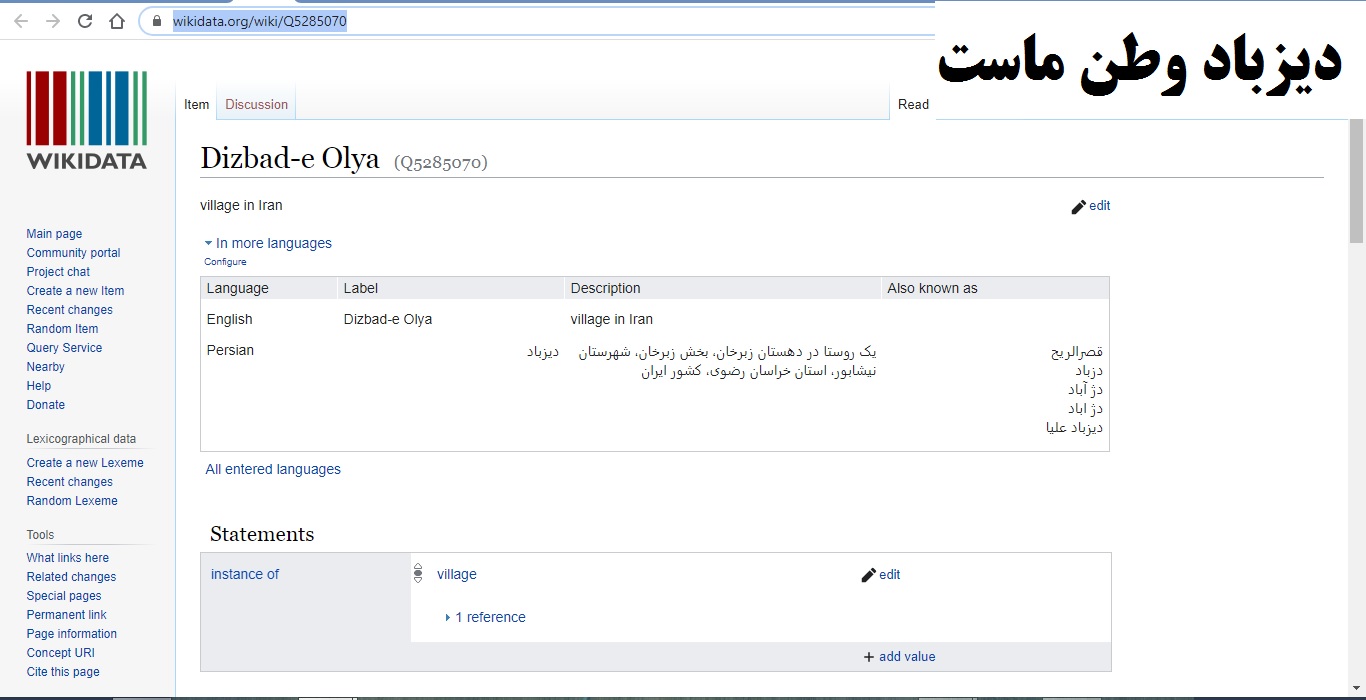
دیزباد و حصار زبرخان در گوگل ارث
«دیزباد وطن ماست»- گوگل ارث یکی از اپلیکیشنهای کاربردی و مادر در اینترنت به حساب می آید که می توانید در آن همه جای دنیا را بگردید و از گردش دیجیتال در کره زمین لذت ببرید.
در این سایت می توانید تصاویر زیبایی به ویژه در منطقه دیزباد بالا و زبرخان مشاهده کنید. در عکس ذیل می توانید نقشه دیزباد در کنار روستای حصار را ملاحظه فرمایید.
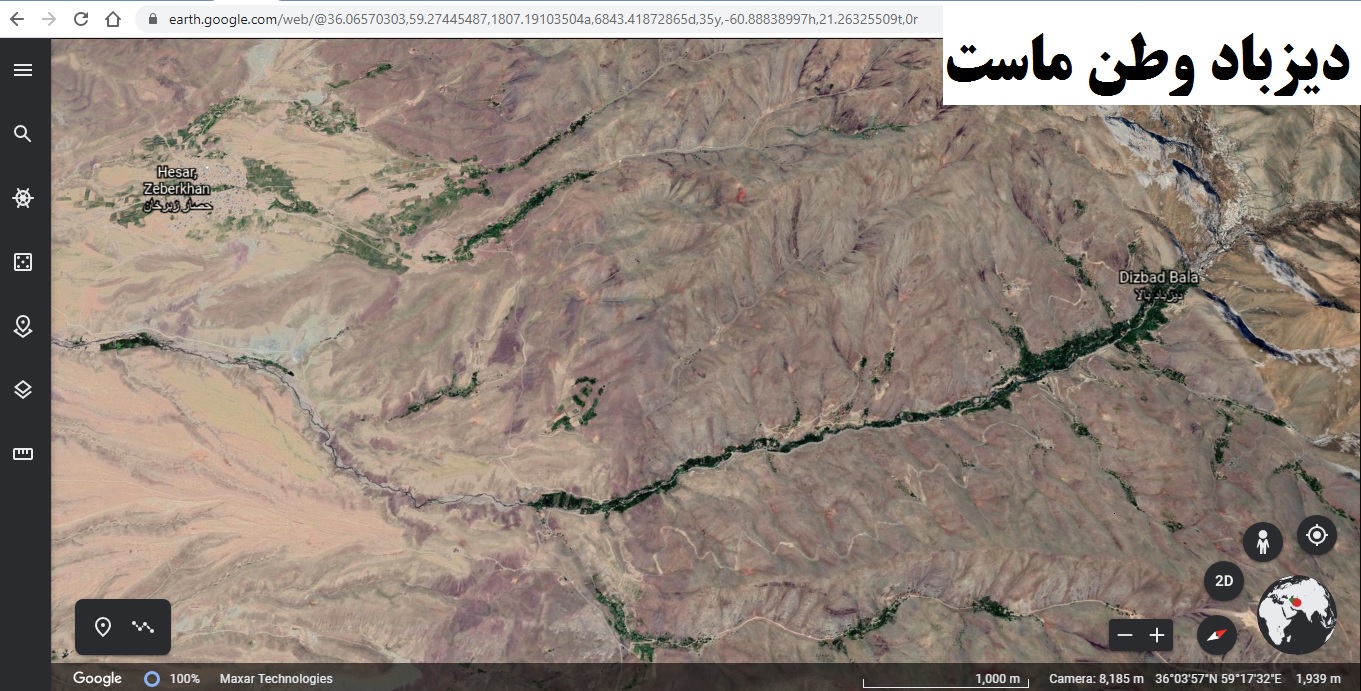
GEOLOGY AND THE AGE OF THE MASHHAD PHYLLITES IN DIZBAD AREA IN THE BINALUD MOUNTAIN
«دیزباد وطن ماست»- واعظ جوادی و امیر پورفتاحی دو نویسنده مقاله ای در باب دیزباد هستند که در اینجا چکیده و لینک دسترسی را قرار می دهم.
به گزارش دیزباد وطن ماست، این مقاله در سایت SID منتشر شده است و نسخه فارسی آن نیز موجود است.
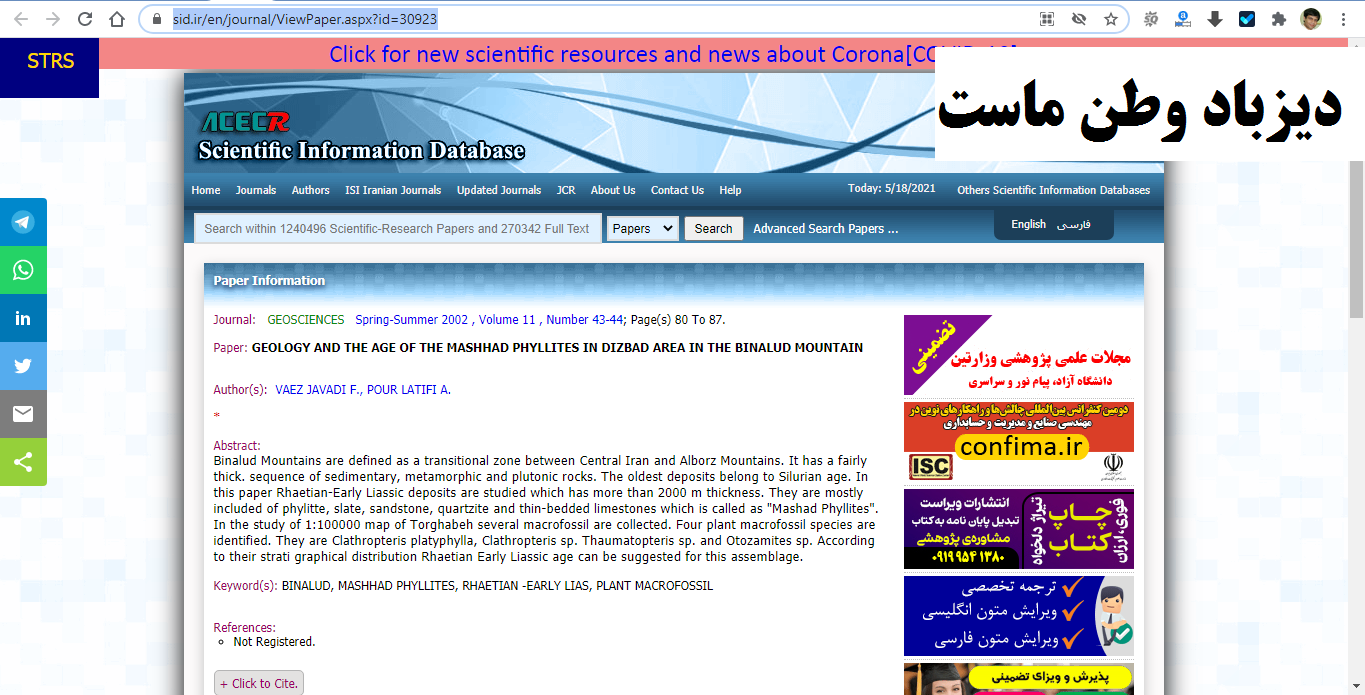
Journal: GEOSCIENCES Spring-Summer 2002 , Volume 11 , Number 43-44; Page(s) 80 To 87.
Paper: GEOLOGY AND THE AGE OF THE MASHHAD PHYLLITES IN DIZBAD AREA IN THE BINALUD MOUNTAIN
Author(s): VAEZ JAVADI F., POUR LATIFI A.
Abstract:
Binalud Mountains are defined as a transitional zone between Central Iran and Alborz Mountains. It has a fairly thick. sequence of sedimentary, metamorphic and plutonic rocks. The oldest deposits belong to Silurian age. In this paper Rhaetian-Early Liassic deposits are studied which has more than 2000 m thickness. They are mostly included of phylitte, slate, sandstone, quartzite and thin-bedded limestones which is called as "Mashad Phyllites". In the study of 1:100000 map of Torghabeh several macrofossil are collected. Four plant macrofossil species are identified. They are Clathropteris platyphylla, Clathropteris sp. Thaumatopteris sp. and Otozamites sp. According to their strati graphical distribution Rhaetian Early Liassic age can be suggested for this assemblage.
Keyword(s): BINALUD, MASHHAD PHYLLITES, RHAETIAN -EARLY LIAS, PLANT MACROFOSSIL
References:
Not Registered.
دیزباد از فراز آسمان
«دیزباد وطن ماست»- سایت ستلایتس که حاوی عکس های ماهواره از فراز زمین است، تصویری بسیار شفاف تر از تصاویر گذشته از دیزباد ارائه کرده است.
از این عکس می توانید قجغر و لوکه را به وضوح مشاهده کنید و اگر روی لینک کلیک کنید و وارد آن شوید می توانید تصاویر دقیقتری از این مکان ها داشته باشید.
